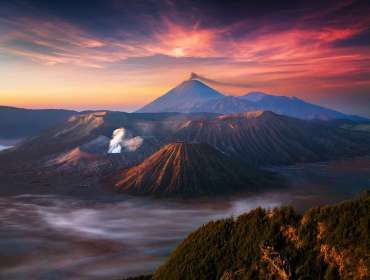“Shop the Shot” is a regular series on ALC where we highlight some of our favorite images taken by photographers from all over the world and reveal the gear and settings used to create them.

Photographer: Chris New
The Story:
When I first heard there was going to be a total solar eclipse with a path across the entire country, I knew I would travel to see totality and photograph it. I’m a huge nerd and so I also knew I wanted to get as up-close and personal as I could and see all the different phenomena not normally visible to the naked eye.
I joined up with some friends who were planning to view it in Nebraska— making an effort to avoid the sea of humanity that threatened most major cities along the eclipse’s path. We ended up in Wyoming the evening before, since we decided the local forecast for our first spot looked iffy. The day of the eclipse, we found our spot at sunrise and the sky was crystal clear.
I had several cameras set up in an effort to capture the event several different ways. For this shot, the closest one, I used a 600mm lens with a 2x extender which brought the focal length up to 1200mm. During the partial phase I had a solar filter on the front to protect the sensor, but during totality I removed it, since the corona is only about as bright as a full moon and the filter would’ve completely blacked it out.
My settings during the event shifted around a lot, but I knew I wanted to keep my shutter speed relatively high, since I was shooting at 1200mm and any bit of motion would be exaggerated. The lens’s image-stabilization helps a lot, so I was comfortable keeping the shutter around 1/250th most of the time. I wanted to keep the image sharp enough so I closed down a bit to f/16 and with a 5D4, I was comfortable with ISO 400 not giving me much noise to deal with.
During totality I jumped back and forth between cameras adjusting my shutter speed up and down, and occasionally ISO as well— just trying to capture as much as I could in the short time available.
Two and a half minutes is not much time when you’re also distracted by such a breath-taking event.
In the end, I really fell in love with the wisps of the Sun’s atmosphere that are only visible for that brief couple of minutes. It was unbelievable to me what I was seeing with my own eyes, un-enhanced or generated by a computer. The familiar yellow color was gone, and ghostly bands of cold white plasma reached out from behind the Moon, and were punctuated by red “prominences”— flares of boiling matter being ejected from the Sun’s surface.
I’m really excited about the images I captured, but I’ve already got a lot of plans and ideas for the next one— either Chile in 2019 or here in the US again in 2024…
The Gear:
The Settings:
ISO 400
f/16
1/250th
Chris New:
Instagram: @seenewphoto and @whoischrisnew





